Connect With Us
Blog
How to Take Good Care of Your Aging Feet
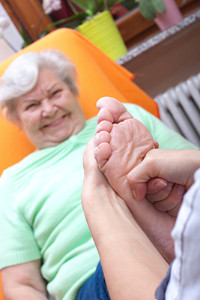 Taking care of your feet is instrumental in preventing potential injury, especially as you get older. The following are some tips on how to properly care for your feet. It's common among the elderly to suffer from both dry skin and fungal infections, especially toenail fungus. To tackle dry skin, wash your feet in warm water, dry thoroughly, and then apply moisturizer. Toenail fungus can be a burden to eliminate, so it's recommended to see a podiatrist for treatment. Choosing the right footwear can mean the difference between comfort and injury. Avoid uncomfortable and unsupportive footwear such as heels, flats, or sandals. Instead, opt for athletic shoes as these offer more support, comfort, and protection. Always ensure that new shoes fit well and provide enough toe room. Orthotics are recommended for those with flat feet or those who need a better insole. Finally, perform routine foot checks for any abnormalities or damage.
Taking care of your feet is instrumental in preventing potential injury, especially as you get older. The following are some tips on how to properly care for your feet. It's common among the elderly to suffer from both dry skin and fungal infections, especially toenail fungus. To tackle dry skin, wash your feet in warm water, dry thoroughly, and then apply moisturizer. Toenail fungus can be a burden to eliminate, so it's recommended to see a podiatrist for treatment. Choosing the right footwear can mean the difference between comfort and injury. Avoid uncomfortable and unsupportive footwear such as heels, flats, or sandals. Instead, opt for athletic shoes as these offer more support, comfort, and protection. Always ensure that new shoes fit well and provide enough toe room. Orthotics are recommended for those with flat feet or those who need a better insole. Finally, perform routine foot checks for any abnormalities or damage.
Proper foot care is something many older adults forget to consider. If you have any concerns about your feet and ankles, contact one of our podiatrists from Family Foot and Ankle Care of Moriches. Our doctors can provide the care you need to keep you pain-free and on your feet.
The Elderly and Their Feet
As we age we start to notice many changes in our body, but the elder population may not notice them right away. Medical conditions may prevent the elderly to take notice of their foot health right away. Poor vision is a lead contributor to not taking action for the elderly.
Common Conditions
- Neuropathy – can reduce feeling in the feet and can hide many life-threatening medical conditions.
- Reduced flexibility – prevents the ability of proper toenail trimming, and foot cleaning. If left untreated, it may lead to further medical issues.
- Foot sores – amongst the older population can be serious before they are discovered. Some of the problematic conditions they may face are:
- Gouging toenails affecting nearby toe
- Shoes that don’t fit properly
- Pressure sores
- Loss of circulation in legs & feet
- Edema & swelling of feet and ankles
Susceptible Infections
Diabetes and poor circulation can cause general loss of sensitivity over the years, turning a simple cut into a serious issue.
If you have any questions please feel free to contact our offices located in Moriches and Shirley, NY . We offer the newest diagnostic and treatment technologies for all your foot and ankle needs.
Everyday Foot Care
 There are many different ways to keep your feet healthy in the summertime. One of the best ways to get your feet in shape this season is to trim your toenails or opt to get a pedicure. A quote from experts at the National Health Services reads, “Use proper nail clippers and cut straight across – not too short, and not down at the corners, as this can lead to ingrown nails. File them, if that’s easier.” You should also change your socks on a daily basis, especially on hot days. The socks you wear should be made of at least 70% cotton or wool in order to keep your feet dry.
There are many different ways to keep your feet healthy in the summertime. One of the best ways to get your feet in shape this season is to trim your toenails or opt to get a pedicure. A quote from experts at the National Health Services reads, “Use proper nail clippers and cut straight across – not too short, and not down at the corners, as this can lead to ingrown nails. File them, if that’s easier.” You should also change your socks on a daily basis, especially on hot days. The socks you wear should be made of at least 70% cotton or wool in order to keep your feet dry.
Everyday foot care is very important to prevent infection and other foot ailments. If you need your feet checked, contact one of our podiatrists from Family Foot and Ankle Care of Moriches. Our doctors can provide the care you need to keep you pain-free and on your feet.
Everyday Foot Care
Often, people take care of their bodies, face and hair more so than they do for their feet. But the feet are a very important aspect of our bodies, and one that we should pay more attention to. Without our feet, we would not be able to perform most daily tasks.
It is best to check your feet regularly to make sure there are no new bruises or cuts that you may not have noticed before. For dry feet, moisturizer can easily be a remedy and can be applied as often as necessary to the affected areas. Wearing shoes that fit well can also help you maintain good foot health, as well as making it easier to walk and do daily activities without the stress or pain of ill-fitting shoes, high heels, or even flip flops. Wearing clean socks with closed shoes is important to ensure that sweat and bacteria do not accumulate within the shoe. Clean socks help to prevent Athlete’s foot, fungi problems, bad odors, and can absorb sweat.
If you have any questions please feel free to contact our offices located in Moriches and Shirley, NY . We offer the newest diagnostic and treatment technologies for all your foot and ankle needs.
When Choosing Children’s Footwear, Fit Comes Before Fashion
 When it comes to choosing children’s footwear, children often favor style over comfort. This can cause a number of foot issues; children’s feet are still developing, and poorly fitted footwear can stymie growth. It is recommended to wear fitted shoes that not only offer some flexibility, but provide support and cushioning as well. The toes should have enough space to move around, and the foot shouldn’t be cramped. Too much space, however, is also bad and can lead to injury. Parents should keep an eye on their children’s feet; if they complain about foot pain, it may be wise to take them to a podiatrist. Fashion and style have their place in choosing footwear, but it shouldn’t be at the cost of healthy feet.
When it comes to choosing children’s footwear, children often favor style over comfort. This can cause a number of foot issues; children’s feet are still developing, and poorly fitted footwear can stymie growth. It is recommended to wear fitted shoes that not only offer some flexibility, but provide support and cushioning as well. The toes should have enough space to move around, and the foot shouldn’t be cramped. Too much space, however, is also bad and can lead to injury. Parents should keep an eye on their children’s feet; if they complain about foot pain, it may be wise to take them to a podiatrist. Fashion and style have their place in choosing footwear, but it shouldn’t be at the cost of healthy feet.
Making sure that your children maintain good foot health is very important as they grow. If you have any questions, contact one of our podiatrists of Family Foot and Ankle Care of Moriches. Our doctors can provide the care you need to keep you pain-free and on your feet.
Keeping Children's Feet Healthy
Having healthy feet during childhood can help prevent medical problems later in life, namely in the back and legs. As children grow, their feet require different types of care. Here are some things to consider...
Although babies do not walk yet, it is still very important to take care of their feet.
Avoid putting tight shoes or socks on his or her feet.
Allow the baby to stretch and kick his or her feet to feel comfortable.
As a toddler, kids are now on the move and begin to develop differently. At this age, toddlers are getting a feel for walking, so don’t be alarmed if your toddler is unsteady or ‘walks funny’.
As your child gets older, it is important to teach them how to take care of their feet.
Show them proper hygiene to prevent infections such as fungus.
Be watchful for any pain or injury.
Have all injuries checked by a doctor as soon as possible.
Comfortable, protective shoes should always be worn, especially at play.
If you have any questions please feel free to contact our offices located in Moriches and Shirley, NY . We offer the newest diagnostic and treatment technologies for all your foot and ankle needs.
Eagles’ Cornerback Sustains Ankle Injury
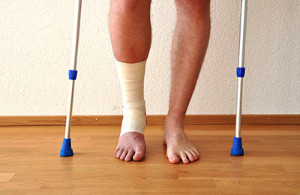 Cornerback Ronald Darby of the Philadelphia Eagles recently suffered an ankle injury during the Redskins vs Eagles game. It is unfortunate for Darby that the injury occurred during the first game of the season. Though he is expected to be out for around four to six weeks, he will not need to undergo surgery. Fortunately, Darby’s injury didn’t seem to slow down the Eagles; they won 30 to 17 over the Washington Redskins.
Cornerback Ronald Darby of the Philadelphia Eagles recently suffered an ankle injury during the Redskins vs Eagles game. It is unfortunate for Darby that the injury occurred during the first game of the season. Though he is expected to be out for around four to six weeks, he will not need to undergo surgery. Fortunately, Darby’s injury didn’t seem to slow down the Eagles; they won 30 to 17 over the Washington Redskins.
Sports related foot and ankle injuries require proper treatment before players can go back to their regular routines. For more information, contact one of our podiatrists of Family Foot and Ankle Care of Moriches. Our doctors can provide the care you need to keep you pain-free and on your feet.
Sports Related Foot and Ankle Injuries
Foot and ankle injuries are a common occurrence when it comes to athletes of any sport. While many athletes dismiss the initial aches and pains, the truth is that ignoring potential foot and ankle injuries can lead to serious problems. As athletes continue to place pressure and strain the area further, a mild injury can turn into something as serious as a rupture and may lead to a permanent disability. There are many factors that contribute to sports related foot and ankle injuries, which include failure to warm up properly, not providing support or wearing bad footwear. Common injuries and conditions athletes face, including:
- Plantar Fasciitis
- Plantar Fasciosis
- Achilles Tendinitis
- Achilles Tendon Rupture
- Ankle Sprains
Sports related injuries are commonly treated using the RICE method. This includes rest, applying ice to the injured area, compression and elevating the ankle. More serious sprains and injuries may require surgery, which could include arthroscopic and reconstructive surgery. Rehabilitation and therapy may also be required in order to get any recovering athlete to become fully functional again. Any unusual aches and pains an athlete sustains must be evaluated by a licensed, reputable medical professional.
If you have any questions please feel free to contact our offices located in Moriches and Shirley, NY . We offer the newest diagnostic and treatment technologies for all your foot and ankle needs.
How to Keep Feet Healthy If You Have Diabetes
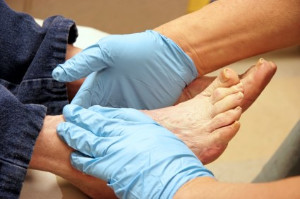 Those who suffer from diabetes typically also suffer from neuropathy. Neuropathy is a condition in which nerves are damaged and numbness often ensues. Typically this loss in sensation occurs in the lower parts of the body, such as the legs and feet. This is troublesome; if a diabetic with neuropathy sustains a minor foot injury, they may not even feel it. Without proper care, these injuries can become potentially serious. Be sure to check your feet daily for blisters, redness, swelling, cuts, or anything else that is abnormal. Wash your feet with warm water, and dry them often to prevent infections or fungus. Using talcum powder and wearing breathable socks that wick away moisture can help keep your feet dry. Make sure your shoes fit and provide good support and cushioning. Avoid soaking your feet, wearing tight or non-breathable socks, and wearing poorly fitted shoes. Seeing a podiatrist once a year for a foot exam can help ensure that your feet are healthy.
Those who suffer from diabetes typically also suffer from neuropathy. Neuropathy is a condition in which nerves are damaged and numbness often ensues. Typically this loss in sensation occurs in the lower parts of the body, such as the legs and feet. This is troublesome; if a diabetic with neuropathy sustains a minor foot injury, they may not even feel it. Without proper care, these injuries can become potentially serious. Be sure to check your feet daily for blisters, redness, swelling, cuts, or anything else that is abnormal. Wash your feet with warm water, and dry them often to prevent infections or fungus. Using talcum powder and wearing breathable socks that wick away moisture can help keep your feet dry. Make sure your shoes fit and provide good support and cushioning. Avoid soaking your feet, wearing tight or non-breathable socks, and wearing poorly fitted shoes. Seeing a podiatrist once a year for a foot exam can help ensure that your feet are healthy.
Diabetic foot care is important in preventing foot ailments such as ulcers. If you are suffering from diabetes or have any other concerns about your feet, contact one of our podiatrists from Family Foot and Ankle Care of Moriches. Our doctors can provide the care you need to keep you pain-free and on your feet.
Diabetic Foot Care
Diabetes affects millions of people every year. The condition can damage blood vessels in many parts of the body, especially the feet. Because of this, taking care of your feet is essential if you have diabetes, and having a podiatrist help monitor your foot health is highly recommended.
The Importance of Caring for Your Feet
- Routinely inspect your feet for bruises or sores.
- Wear socks that fit your feet comfortably.
- Wear comfortable shoes that provide adequate support.
Patients with diabetes should have their doctor monitor their blood levels, as blood sugar levels play such a huge role in diabetic care. Monitoring these levels on a regular basis is highly advised.
It is always best to inform your healthcare professional of any concerns you may have regarding your feet, especially for diabetic patients. Early treatment and routine foot examinations are keys to maintaining proper health, especially because severe complications can arise if proper treatment is not applied.
If you have any questions please feel free to contact our offices located in Moriches and Shirley, NY . We offer the newest diagnostic and treatment technologies for all your foot and ankle needs.
How to Prevent Stress Fractures
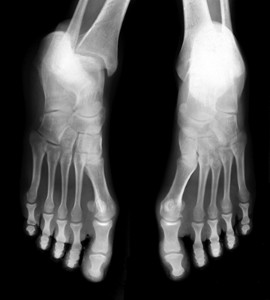 Stress fractures are small cracks in the bone typically caused by repetitive force or stress. While they can occur in various areas of the body, stress fractures are more likely to occur in the foot due to it having to bear weight and having to sustain repeated strikes. They can be very painful and often take time to properly heal. To avoid dealing with stress fractures, practice methods to prevent them from occurring. If you are starting a new physical activity, prevent stress fractures by taking it slowly and gradually increasing intensity and duration. This prevents overuse and allows your body to acclimate to physical stress. Footwear that provides proper support can improve your running style and prevent stress fractures. The surfaces you run on can also affect your risk for injury. Soft surfaces like grass can be more forgiving than harder surfaces like concrete. If you have questions about stress fractures and whether running is right for you, ask a podiatrist.
Stress fractures are small cracks in the bone typically caused by repetitive force or stress. While they can occur in various areas of the body, stress fractures are more likely to occur in the foot due to it having to bear weight and having to sustain repeated strikes. They can be very painful and often take time to properly heal. To avoid dealing with stress fractures, practice methods to prevent them from occurring. If you are starting a new physical activity, prevent stress fractures by taking it slowly and gradually increasing intensity and duration. This prevents overuse and allows your body to acclimate to physical stress. Footwear that provides proper support can improve your running style and prevent stress fractures. The surfaces you run on can also affect your risk for injury. Soft surfaces like grass can be more forgiving than harder surfaces like concrete. If you have questions about stress fractures and whether running is right for you, ask a podiatrist.
Activities where too much pressure is put on the feet can cause stress fractures. To learn more, contact one of our podiatrists from Family Foot and Ankle Care of Moriches. Our doctors can provide the care you need to keep your pain free and on your feet.
Dealing with Stress Fractures of the Foot and Ankle
Stress fractures occur in the foot and ankle when muscles in these areas weaken from too much or too little use. The feet and ankles then lose support when walking or running from the impact of the ground. Since there is no protection, the bones receive the full impact of each step. Stress on the feet can cause cracks to form in the bones, thus creating stress fractures.
What Are Stress Fractures?
Stress fractures occur frequently in individuals whose daily activities cause great impact on the feet and ankles. Stress factors are most common among:
- Runners
- People affected with Osteoporosis
- Tennis or basketball players
- Gymnasts
- High impact workouts
Symptoms
Pain from the fractures occur in the area of the fractures and can be constant or intermittent. It will often cause sharp or dull pain with swelling and tenderness. Engaging in any kind of activity which involves high impact will aggravate pain.
If you have any questions please feel free to contact our offices located in Moriches and Shirley, NY . We offer the newest diagnostic and treatment technologies for all your foot and ankle needs.
Are Shoe Sizes Keeping Up With Women’s Increasing Sizes?
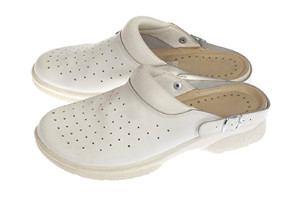 Women’s feet have increased two sizes since the 1970s, and yet their shoe sizes haven’t. Women who have larger feet are left out and have few options. Some girls have to wear boys’ shoes which are not properly fitted for women. Some blame this on overseas production and it not being cost effective to make bigger shoes. Bigger shoes cost more to make however they are accounting for larger percentages in the shoe wear market. A few experts recommend buying from German companies, who have kept up with foot size increases. It is important that not only women but men too wear properly fitted shoes. Shoes that are too small can lead to issues like bunions, corns, and overall foot pain.
Women’s feet have increased two sizes since the 1970s, and yet their shoe sizes haven’t. Women who have larger feet are left out and have few options. Some girls have to wear boys’ shoes which are not properly fitted for women. Some blame this on overseas production and it not being cost effective to make bigger shoes. Bigger shoes cost more to make however they are accounting for larger percentages in the shoe wear market. A few experts recommend buying from German companies, who have kept up with foot size increases. It is important that not only women but men too wear properly fitted shoes. Shoes that are too small can lead to issues like bunions, corns, and overall foot pain.
Getting the right shoe size is an important part of proper foot health. Seek the assistance of one of our podiatrists from Family Foot and Ankle Care of Moriches. Our doctors will provide the care you need to keep you pain-free and on your feet.
Getting the Right Shoe Size
There are many people who wear shoes that are the incorrect size, negatively affecting their feet and posture. Selecting the right shoes is not a difficult process, so long as you keep several things in mind when it comes to choosing the right pair.
- When visiting the shoe store, use the tools available to measure your foot.
- Be sure there is ‘wiggle room’. There should be about an inch between your toes and the tip of your shoes.
- Do not always assume you are the same size, as manufacturers run differently.
- Purchase shoes later in the day, as your feet swell as the day progresses.
- If a shoe is not comfortable, it is not suitable. Most shoes can’t be ‘broken in’, and comfort should be the ultimate goal when it comes to choosing the right pair of shoes
As our feet hold our body weight and keep us moving, it is important to treat them right. Picking the right pair of shoes can provide your feet comfort and mobility without pain.
If you have any questions, please feel free to contact one of our office located in Moriches, NY. We offer the newest diagnostic and treatment technologies for all your foot care needs.
Read more about Getting the Right Shoe Size: To Keep Your Feet HappyCommon Foot Injuries
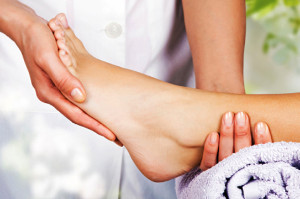 Plantar fasciitis is one of the most common foot conditions that people deal with. It often occurs as a result of intense training or overuse, but you can also develop it from wearing improper footwear. Another common foot problem is Achilles tendonitis, which is the result of inflammation in the Achilles tendon. People with this condition have swelling in the band of tissue, which can cause a lot of pain. It is often caused by tight calf muscles, which put strain on the Achilles tendon. In order to treat it you should get a lot of rest, apply ice to the area, and stretch.
Plantar fasciitis is one of the most common foot conditions that people deal with. It often occurs as a result of intense training or overuse, but you can also develop it from wearing improper footwear. Another common foot problem is Achilles tendonitis, which is the result of inflammation in the Achilles tendon. People with this condition have swelling in the band of tissue, which can cause a lot of pain. It is often caused by tight calf muscles, which put strain on the Achilles tendon. In order to treat it you should get a lot of rest, apply ice to the area, and stretch.
Everyday foot care is very important to prevent infection and other foot ailments. If you need your feet checked, contact one of our podiatrists from Family Foot and Ankle Care of Moriches. Our doctors can provide the care you need to keep you pain-free and on your feet.
Everyday Foot Care
Often, people take care of their bodies, face and hair more so than they do for their feet. But the feet are a very important aspect of our bodies, and one that we should pay more attention to. Without our feet, we would not be able to perform most daily tasks.
It is best to check your feet regularly to make sure there are no new bruises or cuts that you may not have noticed before. For dry feet, moisturizer can easily be a remedy and can be applied as often as necessary to the affected areas. Wearing shoes that fit well can also help you maintain good foot health, as well as making it easier to walk and do daily activities without the stress or pain of ill-fitting shoes, high heels, or even flip flops. Wearing clean socks with closed shoes is important to ensure that sweat and bacteria do not accumulate within the shoe. Clean socks help to prevent Athlete’s foot, fungi problems, bad odors, and can absorb sweat.
If you have any questions please feel free to contact our office located in Moriches, NY. We offer the newest diagnostic and treatment technologies for all your foot and ankle needs.
Read more about Every Day Foot CareHow to Avoid Common Running Injuries
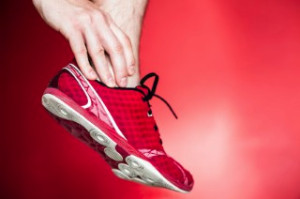 Summer is the most popular time of the year to go outside and become more active. While exercising is beneficial in order to get your body in shape, you are also becoming more susceptible to running injuries. Ankle sprains, stress fractures, and heel pain can all be preventable injuries if you take precautions before jumping into your workout routine. Unsurprisingly, one of the most common sources of running injuries happens to be improper footwear. You should always make sure that the shoes you buy provide enough support for your feet, and are made from a breathable material. Buying shoes that are made for the type of activity you will be performing can also help in avoiding injury. For example, you should buy running shoes if you want to go for a run, and walking shoes if you plan on walking.
Summer is the most popular time of the year to go outside and become more active. While exercising is beneficial in order to get your body in shape, you are also becoming more susceptible to running injuries. Ankle sprains, stress fractures, and heel pain can all be preventable injuries if you take precautions before jumping into your workout routine. Unsurprisingly, one of the most common sources of running injuries happens to be improper footwear. You should always make sure that the shoes you buy provide enough support for your feet, and are made from a breathable material. Buying shoes that are made for the type of activity you will be performing can also help in avoiding injury. For example, you should buy running shoes if you want to go for a run, and walking shoes if you plan on walking.
Exercising your feet regularly with the proper foot wear is a great way to prevent injuries. If you have any concerns about your feet, contact one of our podiatrists of Family Foot and Ankle Care of Moriches. Our doctors will treat your foot and ankle needs.
How to Prevent Running Injuries
Many common running injuries are caused by overuse and overtraining. When the back of the kneecap starts wearing out and starts causing pain in your knee, this is commonly referred to as runner’s knee. Runner’s knee is a decrease in strength in your quadriceps and can occur if you’re not wearing properly fitted or supporting shoes. To prevent runner’s knee, focusing on hip strengthening is a good idea, as well as strengthening your quads to keep the kneecaps aligned.
What Are Some Causes of Running Injuries?
- One cause of a common running injury is called iliotibial band syndrome.
- Plantar fasciitis is also another common injury.
- Stress fractures can occur from overtraining, lack of calcium, or even your running style.
Best Ways to Prevent Running Injuries
- Wear footwear that fits properly and suits your running needs.
- Running shoes are the only protective gear that runners have to safeguard them from injury.
- Make a training schedule. Adding strengthening exercises as well as regular stretching can help keep you strong and limber and can lessen the possibility of injuries.
- Stretching keeps muscles limber; this will help you gain better flexibility.
If you have any questions please feel free to contact our office located in Moriches, NY. We offer the newest diagnostic and treatment technologies for all your foot and ankle needs.
Read more about How to Prevent Running InjuriesThe Harmful Effects of Working on Your Feet
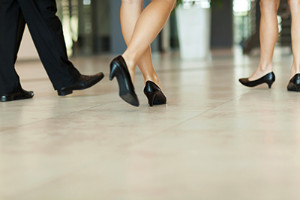 Many people are required to stand on their feet for long hours in order to do their jobs. As a result, people who work as sales associates, factory workers, and nurses often suffer from a condition called plantar fasciitis which can cause a lot of pain in the heels. People who have plantar fasciitis often complain that their feet hurt within the first few steps of the morning, with the pain slowly disappearing the more they walk around. However, if the condition goes untreated, it may start to worsen. It is important that people with plantar fasciitis seek the help of a podiatrist in order to address their situation and receive treatment.
Many people are required to stand on their feet for long hours in order to do their jobs. As a result, people who work as sales associates, factory workers, and nurses often suffer from a condition called plantar fasciitis which can cause a lot of pain in the heels. People who have plantar fasciitis often complain that their feet hurt within the first few steps of the morning, with the pain slowly disappearing the more they walk around. However, if the condition goes untreated, it may start to worsen. It is important that people with plantar fasciitis seek the help of a podiatrist in order to address their situation and receive treatment.
While working on the feet, it is important to take the proper care of them. For more information about working on your feet, contact one of our podiatrists from Family Foot and Ankle Care of Moriches. Our doctors will treat your foot and ankle needs.
Working on Your Feet
Standing on your feet for long periods of time can cause stress and pain in your feet. Your whole body may experience change in terms of posture, back pain, bunions, callouses and or plantar warts. There are ways to avoid these conditions with proper foot care, smart choices and correct posture.
Positive Changes
Negative heeled shoe – Choosing this shoe type places the heel slightly lower than the ball of the foot. These are great for overall foot health. Find shoes that fit you correctly.
Go barefoot – Our feet were not designed to be enclosed for all hours of the day. Try to periodically expose your feet to air.
Eliminate Pain
Foot Exercises – Performing simple exercises, incorporating yoga and doing stretches are beneficial. This will allow increased blood flow to the area and muscles of the foot.
Achilles tendon – Stretching the foot out flat on the floor will relax the calf muscles and tendon. These exercises can be performed almost anywhere. Make sure you add these exercises to your daily regimen.
With a little bit of this information and knowing more about foot health, you will notice changes. Foot stretches and proper footwear will help with pain and prevent further issues.
If you have any questions please feel free to contact our office located in Moriches, NY. We offer the newest diagnostic and treatment technologies for all your foot and ankle needs.
Read more about Working on Your FeetMore...
The Effects of Polyneuropathy
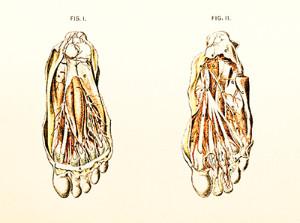 Polyneuropathy is a disease that affects the peripheral nerves of the body, and it is most commonly caused by diabetes. Diabetes causes blood sugar levels to become elevated, which can lead to a decrease in the amount of blood flow that gets to the nerves. As a result, the nerves’ ability to process sensation becomes disrupted. Other less common causes of polyneuropathy include vitamin B12 deficiency, low thyroid levels, HIV, Lyme disease, and exposure to certain medications. Another less common cause for the disease may be a genetic disorder; however, these are often only diagnosed as a cause after all other possible options have been ruled out.
Polyneuropathy is a disease that affects the peripheral nerves of the body, and it is most commonly caused by diabetes. Diabetes causes blood sugar levels to become elevated, which can lead to a decrease in the amount of blood flow that gets to the nerves. As a result, the nerves’ ability to process sensation becomes disrupted. Other less common causes of polyneuropathy include vitamin B12 deficiency, low thyroid levels, HIV, Lyme disease, and exposure to certain medications. Another less common cause for the disease may be a genetic disorder; however, these are often only diagnosed as a cause after all other possible options have been ruled out.
When dealing with systemic disease of the feet, it is extremely important to check the affected areas routinely so that any additional problems are caught quickly. If you have any concerns about your feet and ankles contact one of our podiatrists from Family Foot and Ankle Care of Moriches. Our doctors will assist you with all of your podiatric needs.
Systemic Diseases of the Feet
Systemic diseases affect the whole body, and symptoms usually are displayed in the feet. This condition can make a patient’s ability to walk unbearable. Systemic diseases include gout, diabetes mellitus, neurological disorders, and arthritis.
Gout – is caused by an excess of uric acid in the body. Common symptoms include pain, inflammation, and redness at the metatarsal/phalangeal joint of the base big toe. Gout can be treated by NSAIDs to relieve pain and inflammation, and other drugs that lower the acid levels in the body.
Diabetes mellitus – is an increase in the level of blood sugar that the body cannot counteract with its own insulin. Failure to produce enough insulin is a factor in Diabetes.
Diabetes of the Feet
Diabetic Neuropathy – may lead to damaged nerves and affect the feet through numbness and loss of sensation.
Peripheral Vascular Disease – can restrict the blood flow to the feet, and often times lead to amputation of the feet.
If you have any questions please feel free to contact our office located in Moriches, NY. We offer the newest diagnostic and treatment technologies for all your foot and ankle needs.
Read more about Systemic Diseases of the FootDealing with Plantar Fasciitis
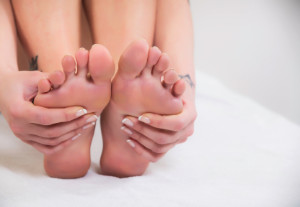 Plantar fasciitis occurs when the tough band of tissue along the base of the foot (plantar fascia) becomes inflamed. The condition itself can be caused by a variety of reasons; the most common being having flat feet, exercising too much, being overweight, or wearing improper footwear. Most people with plantar fasciitis experience pain in the morning that usually goes away as the day progresses. It is a tricky condition to treat because not all cases are the exact same. A treatment that works for one person may not necessarily work for others. However, resting the feet often allows the plantar fasciitis to repair itself over time.
Plantar fasciitis occurs when the tough band of tissue along the base of the foot (plantar fascia) becomes inflamed. The condition itself can be caused by a variety of reasons; the most common being having flat feet, exercising too much, being overweight, or wearing improper footwear. Most people with plantar fasciitis experience pain in the morning that usually goes away as the day progresses. It is a tricky condition to treat because not all cases are the exact same. A treatment that works for one person may not necessarily work for others. However, resting the feet often allows the plantar fasciitis to repair itself over time.
Plantar warts can be very uncomfortable. If you need your feet checked, contact one of our podiatrists from Family Foot and Ankle Care of Moriches. Our doctors will assist you with all of your foot and ankle needs.
About Plantar Warts
Plantar warts are the result of HPV, or human papillomavirus, getting into open wounds on the feet. They are mostly found on the heels or balls of the feet.
While plantar warts are generally harmless, those experiencing excessive pain or those suffering from diabetes or a compromised immune system require immediate medical care. Plantar warts are easily diagnosed, usually through scraping off a bit of rough skin or by getting a biopsy.
Symptoms
- Legions on the bottom of your feet, usually rough and grainy
- Hard or thick callused spots
- Wart seeds, which are small clotted blood vessels that look like little black spots
- Pain, discomfort, or tenderness of your feet when walking or standing
Treatment
- Freezing
- Electric tool removal
- Laser Treatment
- Topical Creams (prescription only)
- Over-the-counter medications
To help prevent developing plantar warts, avoid walking barefoot over abrasive surfaces that can cause cuts or wounds for HPV to get into. Avoiding direct contact with other warts, as well as not picking or rubbing existing warts, can help prevent the further spread of plantar warts. However, if you think you have developed plantar warts, speak to your podiatrist. He or she can diagnose the warts on your feet and recommend the appropriate treatment options.
If you have any questions please feel free to contact our office located in Moriches, NY. We offer the newest diagnostic and treatment technologies for all your foot and ankle needs.
Read more about Plantar FasciitisTips for Arthritic Feet
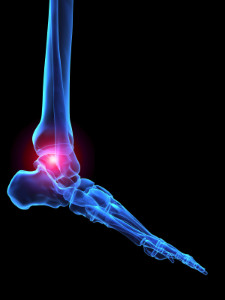 Adults who have arthritis are likely to experience joint inflammation in their feet. Arthritic symptoms in the feet may include stiffness, limited mobility, or tenderness in the joints. Common ways to treat feet issues caused by arthritis are physical therapy, joint replacement surgery, and exercise. It is crucial for people that have arthritis to exercise so that they do not lose any muscle mass. If common exercises such as walking are too painful, water aerobics and stationary bikes may be used instead.
Adults who have arthritis are likely to experience joint inflammation in their feet. Arthritic symptoms in the feet may include stiffness, limited mobility, or tenderness in the joints. Common ways to treat feet issues caused by arthritis are physical therapy, joint replacement surgery, and exercise. It is crucial for people that have arthritis to exercise so that they do not lose any muscle mass. If common exercises such as walking are too painful, water aerobics and stationary bikes may be used instead.
Arthritis can be a difficult condition to live with. If you are seeking treatment, contact one of our podiatrists from Family Foot and Ankle Care of Moriches. Our doctors can provide the care you need to keep you pain-free and on your feet.
Arthritic Foot Care
Arthritis is a joint disorder that involves the inflammation of different joints in your body, such as those in your feet. Arthritis is often caused by a degenerative joint disease and causes mild to severe pain in all affected areas. In addition to this, swelling and stiffness in the affected joints can also be a common symptom of arthritis.
In many cases, wearing ill-fitting shoes can worsen the effects and pain of arthritis. Wearing shoes that have a lower heel and extra room can help your feet feel more comfortable. In cases of rheumatoid arthritis, the arch in your foot may become problematic. Buying shoes with proper arch support that contour to your feet can help immensely.
Alleviating Arthritic Pain
- Exercises that stretch the foot can prevent further pain and injury and increase mobility
- Most of the pain can be alleviated with anti-inflammatory drugs, heat, and topical medications
- Massages can help temporarily alleviate pain.
It is best to see your doctor for the treatment that is right for your needs and symptoms. Conditions vary, and a podiatrist can help you determine the right method of care for your feet.
If you have any questions, please feel free to contact our office located in Moriches, NY. We offer the newest diagnostic tools and technology to treat your foot and ankle needs.
Read more about Arthritic Foot CareTips for Healthy Feet
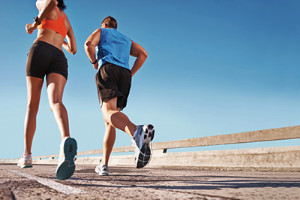 Some of the most common complaints people have with their feet are pain, ingrown toenails, cracked heels, and fungus. When it comes to foot pain, many people are unaware that flat shoes can be just as bad as high heels. Flats do not offer any support for the foot, which can cause those who wear them to experience a lot of pain. Ingrown toenails are often the result of cutting your nails incorrectly; instead of cutting your nails in a rounded shape, you should cut them straight across. If you are trying to cure your cracked heels, you should know that they are caused by a lack of moisture in the feet. A helpful tip is to always moisturize and treat your feet the same way you would want to treat the skin on your face. If you want to get rid of toenail fungus, you should always treat it in its early stages, instead of letting it progress into something much worse. If you have any questions about any of these common foot issues, you should speak to a podiatrist right away.
Some of the most common complaints people have with their feet are pain, ingrown toenails, cracked heels, and fungus. When it comes to foot pain, many people are unaware that flat shoes can be just as bad as high heels. Flats do not offer any support for the foot, which can cause those who wear them to experience a lot of pain. Ingrown toenails are often the result of cutting your nails incorrectly; instead of cutting your nails in a rounded shape, you should cut them straight across. If you are trying to cure your cracked heels, you should know that they are caused by a lack of moisture in the feet. A helpful tip is to always moisturize and treat your feet the same way you would want to treat the skin on your face. If you want to get rid of toenail fungus, you should always treat it in its early stages, instead of letting it progress into something much worse. If you have any questions about any of these common foot issues, you should speak to a podiatrist right away.
Everyday foot care is very important to prevent infection and other foot ailments. If you need your feet checked, contact one of our podiatrists from Family Foot and Ankle Care of Moriches. Our doctors can provide the care you need to keep you pain-free and on your feet.
Everyday Foot Care
Often, people take care of their bodies, face and hair more so than they do for their feet. But the feet are a very important aspect of our bodies, and one that we should pay more attention to. Without our feet, we would not be able to perform most daily tasks.
It is best to check your feet regularly to make sure there are no new bruises or cuts that you may not have noticed before. For dry feet, moisturizer can easily be a remedy and can be applied as often as necessary to the affected areas. Wearing shoes that fit well can also help you maintain good foot health, as well as making it easier to walk and do daily activities without the stress or pain of ill-fitting shoes, high heels, or even flip flops. Wearing clean socks with closed shoes is important to ensure that sweat and bacteria do not accumulate within the shoe. Clean socks help to prevent Athlete’s foot, fungi problems, bad odors, and can absorb sweat.
If you have any questions please feel free to contact our office located in Moriches, NY. We offer the newest diagnostic and treatment technologies for all your foot and ankle needs.
Read more about Every Day Foot CareBlog Archives
- December 2024
- November 2024
- October 2024
- September 2024
- August 2024
- July 2024
- June 2024
- May 2024
- April 2024
- March 2024
- February 2024
- January 2024
- December 2023
- November 2023
- October 2023
- September 2023
- August 2023
- July 2023
- June 2023
- May 2023
- April 2023
- March 2023
- February 2023
- January 2023
- December 2022
- November 2022
- October 2022
- September 2022
- August 2022
- July 2022
- June 2022
- May 2022
- April 2022
- March 2022
- February 2022
- January 2022
- December 2021
- November 2021
- October 2021
- September 2021
- August 2021
- July 2021
- June 2021
- May 2021
- April 2021
- March 2021
- February 2021
- January 2021
- December 2020
- November 2020
- October 2020
- September 2020
- August 2020
- July 2020
- June 2020
- May 2020
- April 2020
- March 2020
- February 2020
- January 2020
- December 2019
- November 2019
- October 2019
- September 2019
- August 2019
- July 2019
- June 2019
- May 2019
- April 2019
- March 2019
- February 2019
- January 2019
- December 2018
- November 2018
- October 2018
- September 2018
- August 2018
- July 2018
- June 2018
- May 2018
- April 2018
- March 2018
- February 2018
- January 2018
- December 2017
- November 2017
- October 2017
- September 2017
- August 2017
- July 2017
- June 2017
- May 2017
- April 2017
- March 2017
- February 2017
- January 2017
- December 2016
- November 2016
- October 2016
- September 2016
- August 2016
- July 2016
- June 2016
- October 2015
- September 2015
- August 2015
- July 2015
- June 2015
- May 2015
- April 2015



